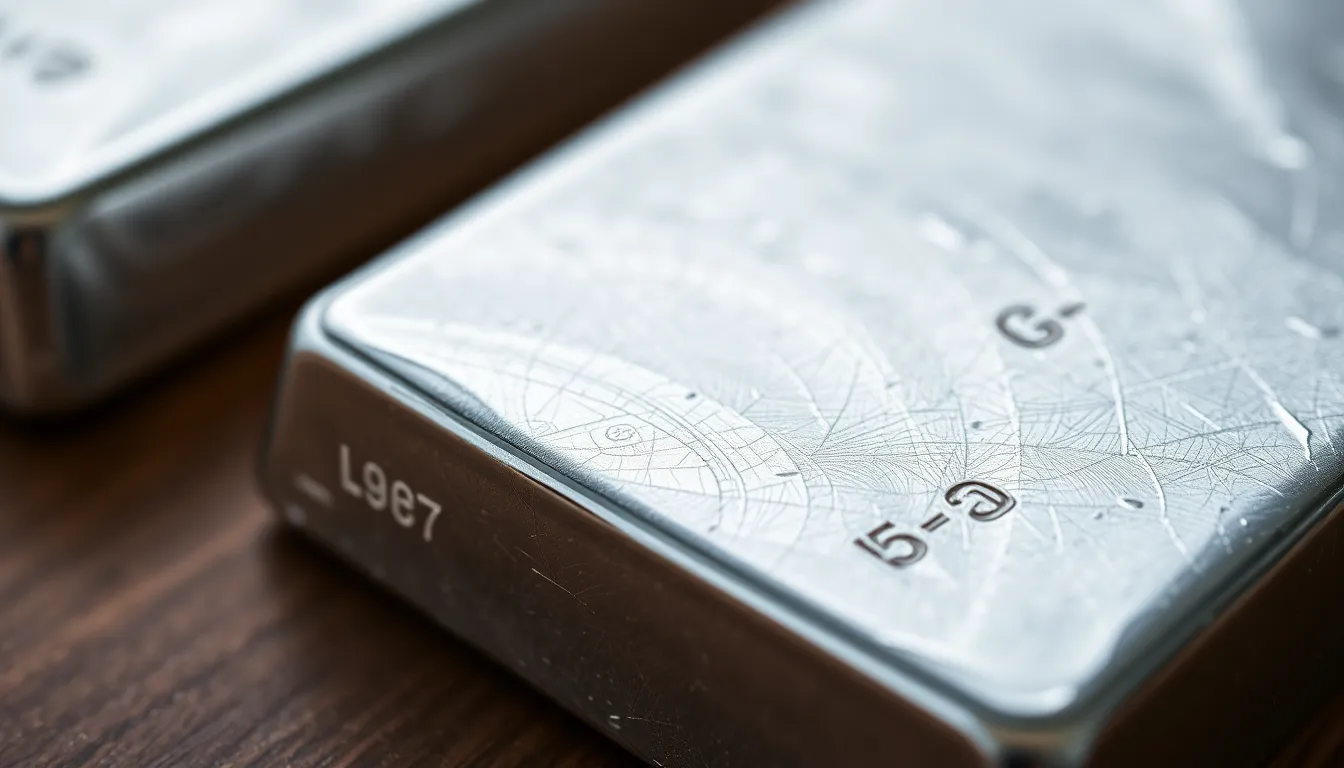Table of Contents
ToggleWhen it comes to precious metals, silver shines bright—literally and figuratively. But how does it measure up in the magnetic arena? Picture this: you’re at a party, showing off your shiny silver jewelry, and someone asks, “Does silver stick to a magnet?” Suddenly, you’re faced with a dilemma that could make or break your social standing. Fear not! This article dives into the fascinating world of magnets and silver, revealing the truth behind this shiny conundrum.
Understanding Magnetism
Magnetism plays a crucial role in determining how materials interact with magnets. It involves the force generated by magnets, affecting objects made from certain materials.
What Is Magnetism?
Magnetism refers to a physical phenomenon produced by the motion of electric charge. It manifests in the attraction or repulsion between materials, particularly metals. Common elements exhibiting magnetic properties include iron, nickel, and cobalt. Magnetic fields surround magnets, influencing nearby metallic objects. Understanding this concept helps clarify interactions between various materials and magnetic forces.
Types of Magnets
Magnets can be classified into several categories based on their properties. Permanent magnets maintain a constant magnetic field and do not require external energy. Temporary magnets only exhibit magnetism when exposed to a magnetic field. Electromagnets rely on electric current to generate a magnetic field, which can be turned on or off. Within these types, various applications arise, ranging from industrial equipment to household items, highlighting the diverse uses of magnets in daily life.
Properties of Silver

Silver possesses unique properties that distinguish it from other metals. Understanding these properties reveals why silver doesn’t stick to magnets.
Physical Properties of Silver
Silver exhibits a high degree of reflectivity and luster, making it an attractive choice for jewelry and decorative items. Its density measures about 10.49 grams per cubic centimeter, defining its substantial weight compared to other elements. Additionally, silver stands as one of the most conductive metals, facilitating the easy flow of electricity and heat. Ductility allows silver to be drawn into thin wires, enhancing its versatility in various applications. Malleability permits silver to be shaped under pressure, forming intricate designs or sheets without breaking.
Chemical Properties of Silver
In terms of chemical behavior, silver is relatively resistant to corrosion and tarnishing compared to other metals. It reacts slowly with oxygen and most inorganic acids, maintaining stability over time. When exposed to sulfur compounds, silver can form silver sulfide, which results in tarnishing. The reactivity with halogens is notable; for example, silver chloride forms when silver comes into contact with chlorine. Silver also interacts with strong oxidizers, creating various silver compounds that possess different properties.
Silver and Magnetism
Silver’s interaction with magnets raises interesting inquiries about its magnetic properties. Understanding whether silver sticks to a magnet involves exploring its atomic structure and material characteristics.
Does Silver Stick to a Magnet?
Silver does not stick to a magnet. Exhibiting a non-magnetic nature, this precious metal shows no attraction to magnetic fields. Even strong magnets do not influence silver objects, which often leads to curiosity among enthusiasts and collectors alike. Many assume that valuable metals possess magnetic properties, but silver’s behavior confirms otherwise.
Why Silver Doesn’t Stick to a Magnet
Silver’s atomic arrangement explains its lack of magnetism. Unlike ferromagnetic materials such as iron, silver possesses a face-centered cubic structure that does not support magnetic alignment. Electrons in silver do not arrange in ways that create a magnetic field. This unique electron activity, combined with silver’s high conductivity, confirms its inability to attract magnets, making it a fascinating subject in metallurgy.
Testing the Magnetic Properties of Silver
Understanding how silver responds to magnets involves simple testing methods. Conducting straightforward experiments clarifies the material’s properties.
Common Tests to Determine Magnetism
Magnetic tests often include using a standard magnet, an iron filing test, or a magnetic susceptibility meter. Applying a magnet directly to a silver sample reveals its non-magnetic nature. Observing the reaction of silver against iron filings indicates no attraction. Using a magnetic susceptibility meter provides accurate data about magnetism levels in various materials. Each method confirms silver’s lack of magnetism effectively and simply.
Results and Observations
Results consistently show silver does not stick to magnets. No response occurs when placing silver near strong magnets. Testing with different magnet types, including neodymium and ceramic, yields the same conclusion. Observations highlight silver’s face-centered cubic structure, which fails to create magnetic alignment. Each test reinforces the understanding that magnetic properties are absent in silver, intriguing those exploring its characteristics.
Silver’s intriguing properties set it apart from many other metals. Its non-magnetic nature surprises those who assume precious metals should exhibit magnetic qualities. Understanding the atomic structure of silver reveals why it doesn’t attract magnets.
This knowledge not only enhances appreciation for silver but also informs practical applications in various fields. Whether used in jewelry or electronics, silver’s unique characteristics continue to captivate enthusiasts and professionals alike. Recognizing that silver doesn’t stick to magnets reinforces the importance of exploring the distinct behaviors of different materials.





